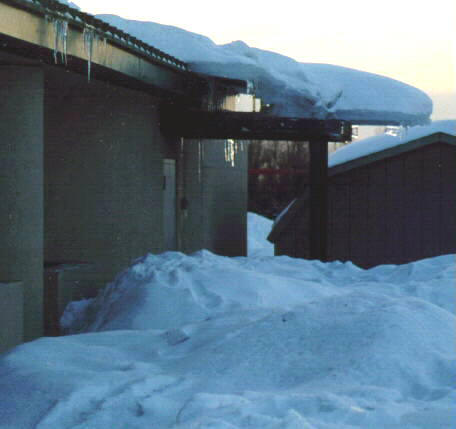| Overview |
| Ground Snow Load |
| Flat Roof Snow Load |
| Sloped Roof Snow Load |
| Partial Loading |
| Unbalanced Snow Load |
| Drifts |
| Sliding Snow |
| Example Problems |
|
References |
| Report Errors or Make Suggestions |
Section 8.4
Sloped Roof Snow Load, ps
Last Revised: 11/04/2014
The sloped roof snow load, ps, is found by multiplying the flat roof snow load, pf, by a slope factor, Cs. The value of Cs depends on such factors as
- The slope of the roof.
- Is the roof warm or cold?
- The nature of the roofing surface.
- The existence of obstructions to sliding.
The values for Cs are obtained from the three graphs found in ASCE 7-05 Figure 7-2. Each graph relates to one of the three thermal factor values given in ASCE 7-05 Table 7-3. On each graph are two curves. One for "unobstructed slippery surfaces" and one for all other types of surfaces.
ASCE 7-05 7.4.1 provides some minimum insulation values for warm roofs that are to be considered to be unobstructed and slippery. In buildings with insufficient insulation, ice damming on eaves is common, resulting in an obstruction that might not be considered by looking at the design of the roof system. Ice dams may be effective in preventing sliding on otherwise slippery roofs.
Figure 8.4.1 shows an obstruction on a slippery roof that turns out to be a drift that formed on an awning over a door way. Note that show up slope from the obstruction is still on the roof while all the rest of the snow has slid off the roof.
Figure 8.4.1
Roof Obstruction
|
|
| Slippery Roof with an Obstruction |
 |
| Close up of the Obstruction |
High Pitch (slope > 70o) and Curved Roofs
For roof slopes exceeding 70o, of any surface type, it is assumed that the snow will slide off the roof.
Measuring Sloped Roof Snow Load